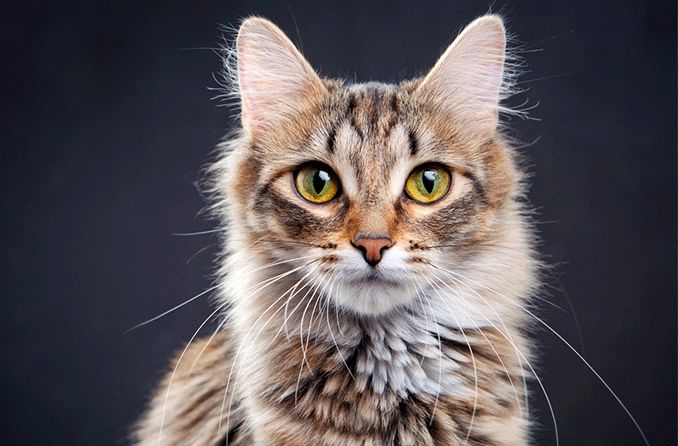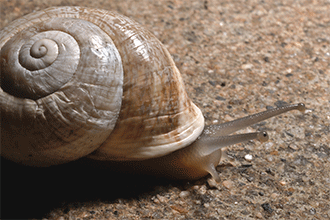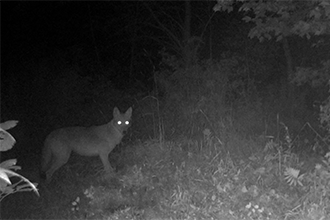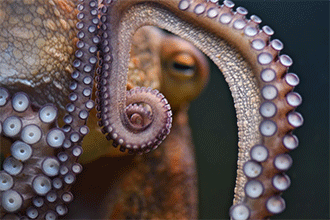How To Make Realistic Plastic Eyes For Stuffed Animals
11 Questions Answered Nearly Amazing Brute Eyes

Our planet has effectually 9 meg animal species, and nearly all of them accept eyes. Animate being eyes work in so many ways that it'southward impossible to capture all the amazing things they practice in a unmarried article.
The simplest eyes discover low-cal and shadows and help creatures avoid crashing into things. The about advanced eyes capture a vast range of the calorie-free spectrum, perceiving the world in means far beyond human vision.
A conventional vision system in the animal kingdom has optics with calorie-free-sensitive nerves that transmit visual information to the encephalon. A few species have no brains just all the same boast really cool optics.
This article touches on eleven questions and answers that capture some of the remarkable things about animal eyes and vision throughout the brute kingdom.
i. Do all animals have optics?

Most. Nearly 96% of the animal kingdom has some kind of optical structures that create imagery from light waves and nerve impulses. The earliest known eyes in animals evolved 600 meg years ago during the Cambrian Explosion.
Most animals with basic and spines (vertebrates) and some boneless ones (molluscs) accept eyes with some form of lens that projects light waves onto calorie-free-sensitive fretfulness in the retina.
2. What do animals see?
Nobody knows for sure. As this video from National Geographic explains, every creature on earth evolved over fourth dimension in its own unique way. Thus, each species has specific mechanisms for perceiving light, color, depth, distance and other variables in its specific environment.
And most animals' eyes connect to brains of wildly varying complexities. It'due south fun to wonder what animals encounter, but without being able to literally see through their optics or feel the rest of their nervous systems, we'll never truly know.
iii. Practice eyes require a brain? Not if yous're a box jellyfish.
The box jellyfish has no encephalon but has 24 eyes, some of which share advanced structures of the eyes of vertebrates and cephalopods similar the squid and octopus. Scientists don't know why the box jellyfish has advanced eyes, which accept paradigm-forming lenses, given that the species doesn't see much beyond light, shadows and shapes.
four. How precipitous is a domesticated dog'southward vision?
Dogs do non see as many colors equally humans do, and their eyesight is not near as precise. Thus, homo vision is better in some ways. However, our home-leap beagles and black labs trace their roots back to wild wolves, which helps explicate why our dogs see much improve in the dark than humans do: Their wolf ancestors needed it for night-long hunts.
5. Why do some animals seem to have glow-in-the-night eyes?

Deer, cattle, horses and many other animals, including all kinds of cats (from tigers and mountain lions to domestic cats), have a mirror-like region on their retinas that reflects low-cal waves back into their eyes, boosting their night vision. Shining a light into these animals' eyes at night activates this region, known as the tapetum lucidum, giving their optics a ghostly glow.
6. Why exercise business firm cats' pupils take that vertical shape?
Humans have 1 thing in mutual with lions and other big, wild cats: round pupils. Domestic cats, by dissimilarity, take distinctive pupils that are elliptical and vertical. Why the difference?
Minor domesticated cats evolved in the wild to hunt close to the ground, and vertical pupils apparently improved their power to find prey. Large cats, by dissimilarity, evolved round pupils that are more compatible with their college field of vision for hunting.
Horses, sheep and goats have pupils that are elliptical and horizontal. They evolved as prey animals and horizontal pupils give them a wider range of vision to assist them spot predators.
7. Why are honeybees and so bully at finding flowers?
The chemical compound eyes of a honeybee give it remarkable powers of color detection. Each of the honeybee's optics has between 6,900 and viii,600 lenses chosen facets. While honeybees' field of vision is nothing similar that of a human (what they see looks more similar a mosaic), they tin can detect colors five times faster than humans. This speed — the fastest in the animal kingdom — helps bees find flowers speedily and cipher in on their prized nectar.
8. Which creature has the biggest eyes?

The biggest eyes in the animal kingdom belong to the giant squid, whose eyes measure up to ten inches beyond, according to the Smithsonian Institution.
Why does this squid need such large eyes? It'due south similar because the giant squid swims the ocean's dark, murky depths, where information technology'south difficult to see anything. And those large optics come in handy: One study noted that a giant squid could detect a sperm whale about 400 feet away.
ix. What gives the bald eagle such precise distance vision?
A bald hawkeye soaring hundreds of anxiety in a higher place a river can spot a fish, dive down and grab dejeuner with pinpoint precision. What makes this possible? Generally, information technology's the massive quantity of visual receptors called cones in a section of the eagle'due south retina chosen the fovea.
While each human being eye has one fovea with 200,000 cones per millimeter, each baldheaded eagle heart has two fovea, each of which has a million cones per millimeter. Bald hawkeye fovea are as well shaped somewhat similar a telephoto lens, further boosting long-range vision.
x. How much of the world does a horse see?
Riding a horse is a bit like having optics in the back of your head… literally — because a horse has expansive peripheral vision. A equus caballus's optics, mounted on the sides of its skull, provide a field of view measuring 340 degrees (out of 360). That means a horse can encounter about all the way around itself whatever direction information technology may be facing.
There'southward just one hitch: A horse also has a blind spot — right in front of its nose.
11. Does a shrimp have the most advanced optics of any animal?

Maybe. A crustacean called the mantis shrimp tin accept up to 16 kinds of photoreceptors, the cells that make vision possible. Humans, by contrast, have only 3 types of photoreceptors: for the colors ruddy, bluish and dark-green.
Mantis shrimp accept compound eyes similar a bee or an ant. A couple of species have photoreceptors for ultraviolet, infrared and polarized light waves. This means they tin perceive light in ways far beyond the capability of other animals. Still, they are shrimp, with tiny brains. Scientists aren't sure what these shrimp do with all of that visual range... and so piddling brain capacity with which to discern all they see.
Want to see more? England's Natural History Museum has 17 examples of excellent animate being optics.
RELATED READING: Animals see a globe that's completely invisible to our eyes
Page published on Wednesday, May 12, 2021
Page updated on Wednesday, March 16, 2022
Source: https://www.allaboutvision.com/resources/human-interest/animal-eyes-facts/
Posted by: moodyoursend.blogspot.com

0 Response to "How To Make Realistic Plastic Eyes For Stuffed Animals"
Post a Comment